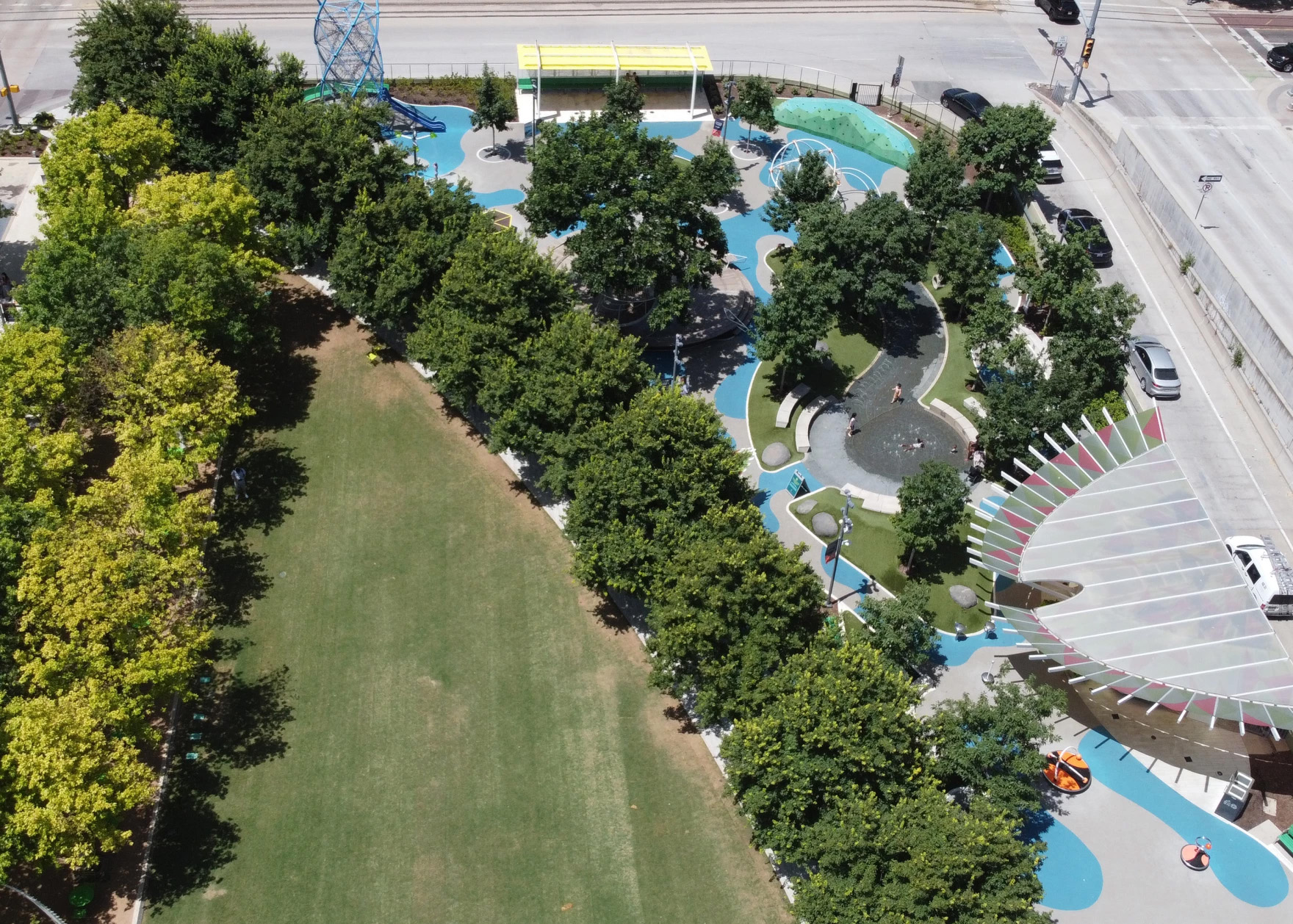From KUT News:
As a high-stakes project to sink I-35 through downtown Austin kicks into gear this summer, city officials and the University of Texas are looking to Dallas for a possible glimpse of the future.
The vision: a vast, green expanse covering sections of I-35, similar to Klyde Warren Park in Dallas. The 5.4-acre sanctuary spans the sunken Woodall Rodgers Freeway, connecting the densely populated Uptown neighborhood with a thriving Arts District and downtown business center.
Since it opened in 2012, this “deck park” has been widely hailed as a success, boosting land values and stimulating the development of luxury high-rise buildings with homes and offices that are among the most coveted in the Dallas-Fort Worth area.
But the project also raises important questions about how Austin and UT should navigate the governance of their potential new parks, balancing public accessibility with privatization and commercialization.
























